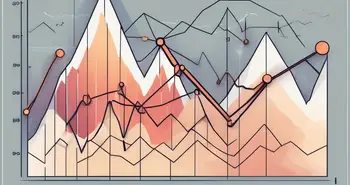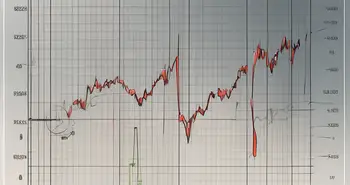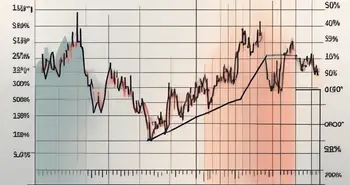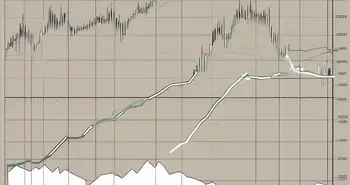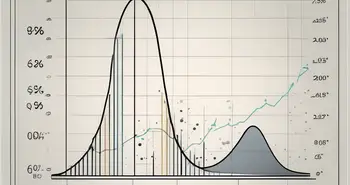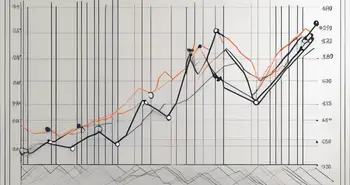A Practical Guide for the Relative Volume Indicator

As an experienced trader, I understand the importance of having a solid understanding of various trading indicators. One such indicator that has gained significant attention in recent years is the Relative Volume Indicator. In this comprehensive guide, I will walk you through everything you need to know about this powerful tool and how it can enhance your trading strategy.
What is the Relative Volume Indicator?
The Relative Volume Indicator, also known as RVOL, is a technical analysis tool that measures the current trading volume of a stock compared to its average volume over a specific period. It provides valuable insights into market sentiment by identifying periods of high or low trading activity.
Understanding the Relative Volume Indicator requires a solid foundation. The RVOL is calculated by dividing the current volume by the average volume. This ratio indicates whether the stock is experiencing above or below average trading volume. A value greater than 1 implies higher-than-average volume, while a value below 1 indicates lower-than-average volume.
Expert Tip: When analyzing RVOL, it is crucial to compare the indicator's value with the stock's historical volume patterns. By doing so, you can identify significant deviations and anticipate potential price movements.
The Relative Volume Indicator plays a pivotal role in trading by providing valuable insights into market activity. It offers a deeper understanding of investor sentiment and can help you make more informed trading decisions. By pinpointing periods of increased volume, you can identify potential breakout or breakdown zones.
Personally, I have found the Relative Volume Indicator to be especially useful when trading momentum stocks. It has helped me identify stocks that are experiencing a surge in trading activity, indicating possible trend reversals or the continuation of a strong trend.
Expert Advice: To effectively use the Relative Volume Indicator, combine it with other technical analysis tools such as moving averages, trend lines, and price patterns. This holistic approach can significantly enhance your trading strategy and improve your overall profitability.
Additionally, it is important to note that the Relative Volume Indicator can be applied to various timeframes, ranging from intraday to weekly or even monthly. By adjusting the timeframe, you can gain insights into different levels of market activity and adapt your trading strategy accordingly.
Furthermore, the Relative Volume Indicator can be used in conjunction with other volume-based indicators, such as the Volume Weighted Average Price (VWAP) or the On-Balance Volume (OBV). These complementary indicators can provide further confirmation or divergence signals, strengthening the reliability of your analysis.
Moreover, it is worth mentioning that the Relative Volume Indicator is not limited to individual stocks. It can also be applied to other financial instruments such as exchange-traded funds (ETFs), futures contracts, or even entire market indices. This versatility allows traders and investors to gain insights into broader market trends and make well-informed decisions.
In conclusion, the Relative Volume Indicator is a powerful tool that provides valuable insights into market sentiment and trading activity. By understanding its calculation, applying it in conjunction with other technical analysis tools, and considering various timeframes and instruments, you can enhance your trading strategy and increase your chances of success in the dynamic world of financial markets.
Delving Deeper into the Relative Volume Indicator
The Relative Volume Indicator (RVOL) is a powerful tool that traders use to gain insights into market activity and identify potential trading opportunities. By comparing the current day's volume to the average volume, the RVOL provides a relative value that helps traders gauge buying or selling pressure.
Understanding how the RVOL works is essential for any trader looking to make informed decisions. When the RVOL is above 1, it indicates increased activity in the market. This suggests that other traders have spotted an opportunity and are actively buying or selling. On the other hand, values below 1 signify reduced activity, often indicating a lack of interest or indecisiveness among market participants.
How to Interpret the Relative Volume Indicator
Interpreting the RVOL requires a keen eye for trends and patterns. By observing consistent above-average volume during uptrends, traders can identify increased buying pressure and potential further upside. This can be a signal to consider entering a long position or adding to an existing one. Conversely, persistent below-average volume during downtrends might suggest waning selling pressure and a possible reversal on the horizon. Traders may take this as an opportunity to consider a short position or exit a long position.
However, it is crucial to remember that the Relative Volume Indicator does not guarantee future price movements. While it provides valuable insights into market activity, it should always be used in conjunction with other technical analysis tools and indicators to confirm trading decisions. Combining the RVOL with indicators such as moving averages, trend lines, and oscillators can provide a more comprehensive picture of market conditions and increase the probability of successful trades.
Moreover, it is important to consider the context in which the RVOL is being used. Different markets and securities may have varying levels of average volume, and what may be considered high volume for one stock could be average for another. Therefore, it is essential to compare the RVOL to the average volume specific to the security being analyzed.
In addition, traders should also pay attention to any significant news or events that may be impacting the market. Unexpected news releases, earnings reports, or economic data can greatly influence trading volume and potentially invalidate or strengthen the signals provided by the RVOL.
Furthermore, it is worth noting that the RVOL can be used in various timeframes. Traders can analyze the RVOL on intraday charts, daily charts, or even longer-term charts, depending on their trading style and objectives. Different timeframes may reveal different patterns and levels of buying or selling pressure, allowing traders to adapt their strategies accordingly.
In conclusion, the Relative Volume Indicator is a valuable tool for traders seeking to gain insights into market activity and identify potential trading opportunities. By comparing the current day's volume to the average volume, the RVOL provides a relative value that helps traders gauge buying or selling pressure. However, it is important to interpret the RVOL in the context of other technical analysis tools, consider the specific security being analyzed, and be aware of any significant news or events that may impact market activity. With careful analysis and consideration, the RVOL can be a valuable addition to a trader's toolkit.
Using the Relative Volume Indicator Effectively
Strategies for Using the Relative Volume Indicator
Implementing the Relative Volume Indicator into your trading strategy can significantly improve your ability to identify high-probability trades. Here are some strategies to consider:
- Breakout Confirmation: When a stock breaks out of a key resistance level with above-average volume, it confirms the breakout and suggests the strength of the new trend.
- Divergence Detection: Compare the Relative Volume Indicator's trend with the stock's price trend. Divergences can indicate a weakening trend or a potential reversal.
- Volume-Based Stop Loss: Set your stop-loss levels based on the Relative Volume Indicator. Placing stops below areas of low volume can help protect your capital.
Common Mistakes to Avoid When Using the Relative Volume Indicator
While the Relative Volume Indicator can be a powerful tool, it is essential to steer clear of common pitfalls that could hinder your trading success. Here are some mistakes to avoid:
- Overlooking Context: Always consider the broader market environment and other technical analysis factors alongside the RVOL. Understanding the overall picture is critical.
- Relying Solely on RVOL: The Relative Volume Indicator is just one piece of the puzzle. Use it alongside other indicators to validate your trading decisions.
- Ignoring Fundamental Analysis: While technical analysis is essential, understanding the underlying fundamentals of a stock or market is equally important for long-term trading success.
The Relative Volume Indicator vs Other Trading Indicators
Unique Features of the Relative Volume Indicator
What sets the Relative Volume Indicator apart from other indicators is its ability to gauge market sentiment in real-time. By comparing current volume to the average, it offers a unique perspective into trading activity and helps traders spot significant shifts in sentiment.
Comparing the Relative Volume Indicator with Other Indicators
While all indicators serve a purpose, the Relative Volume Indicator provides additional insights that complement other trading tools. Volume is a fundamental aspect of market analysis, and incorporating the RVOL into your strategy can enhance your overall trading performance.
The Future of Trading with the Relative Volume Indicator
Potential Developments in Relative Volume Indicator Use
The financial markets are constantly evolving, and the use of indicators is no exception. In the future, we can anticipate advancements in technology that will further refine the interpretation and application of the Relative Volume Indicator.
The Impact of Technology on the Relative Volume Indicator
Technological advancements have already had a substantial impact on trading practices. With the growing availability of robust data analysis tools and artificial intelligence, traders can harness the power of the Relative Volume Indicator more effectively than ever before. These advancements will continue to shape and improve the way we utilize this valuable trading tool.
FAQ
What is the Relative Volume Indicator?
The Relative Volume Indicator is a technical analysis tool that compares the current trading volume of a stock to its average volume over a specific period. It provides insights into market sentiment by identifying periods of high or low trading activity.
Why is the Relative Volume Indicator important?
The Relative Volume Indicator is important as it offers a deeper understanding of investor sentiment and helps traders make more informed trading decisions. It can identify potential breakout or breakdown zones by pinpointing periods of increased volume.
How can I use the Relative Volume Indicator effectively?
To use the Relative Volume Indicator effectively, combine it with other technical analysis tools such as moving averages, trend lines, and price patterns. This holistic approach can significantly enhance your trading strategy and profitability.
What common mistakes should I avoid when using the Relative Volume Indicator?
Avoid overlooking the context, relying solely on the RVOL, and ignoring fundamental analysis. Consider the broader market environment and other technical analysis factors alongside the RVOL. Understand that the Relative Volume Indicator is just one piece of the puzzle and should be used in conjunction with other indicators.
How does the Relative Volume Indicator compare to other trading indicators?
The Relative Volume Indicator provides unique insights into market sentiment by gauging trading activity in real-time. It complements other indicators by providing additional perspectives on volume and helping traders spot significant shifts in sentiment.
As an expert trader, I encourage you to explore and integrate the Relative Volume Indicator into your trading strategy. Remember to stay disciplined, continuously refine your approach, and combine it with other critical indicators for a comprehensive analysis of the markets.
Ready to take your trading to the next level with the insights from the Relative Volume Indicator? Discover the innovative world of Morpher, where blockchain technology revolutionizes the way you trade. With no fees, infinite liquidity, and the ability to trade a vast array of assets, Morpher.com is the perfect platform to apply your trading strategies. Experience the freedom of fractional investing, the power of 10x leverage, and the security of a self-hosted wallet. Sign Up and Get Your Free Sign Up Bonus today to transform your trading experience with Morpher.

Disclaimer: All investments involve risk, and the past performance of a security, industry, sector, market, financial product, trading strategy, or individual’s trading does not guarantee future results or returns. Investors are fully responsible for any investment decisions they make. Such decisions should be based solely on an evaluation of their financial circumstances, investment objectives, risk tolerance, and liquidity needs. This post does not constitute investment advice.

Painless trading for everyone
Hundreds of markets all in one place - Apple, Bitcoin, Gold, Watches, NFTs, Sneakers and so much more.

Painless trading for everyone
Hundreds of markets all in one place - Apple, Bitcoin, Gold, Watches, NFTs, Sneakers and so much more.



